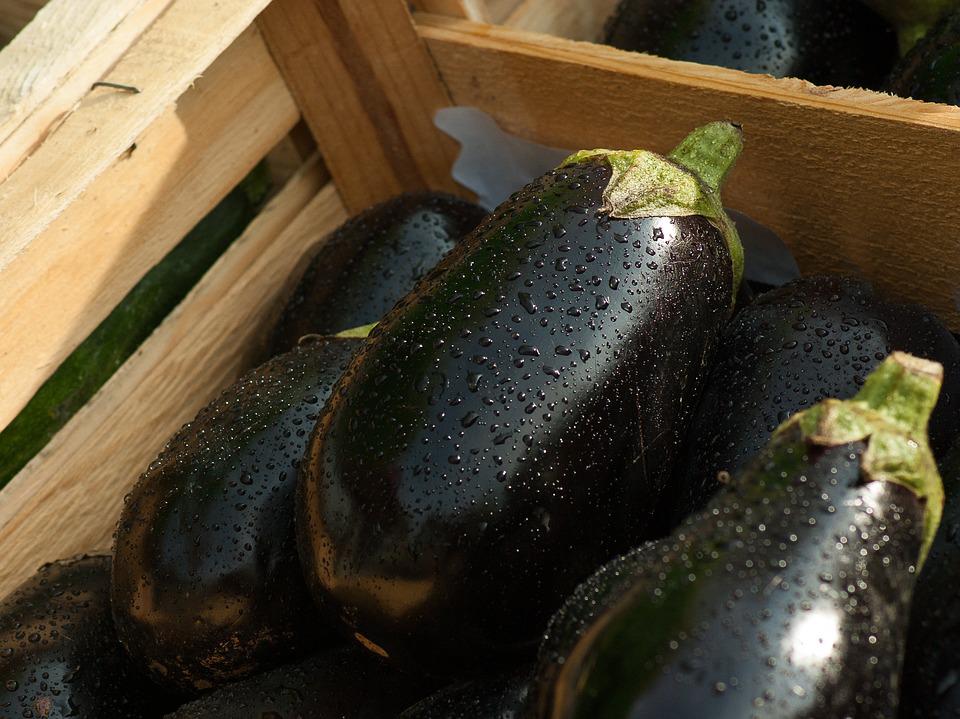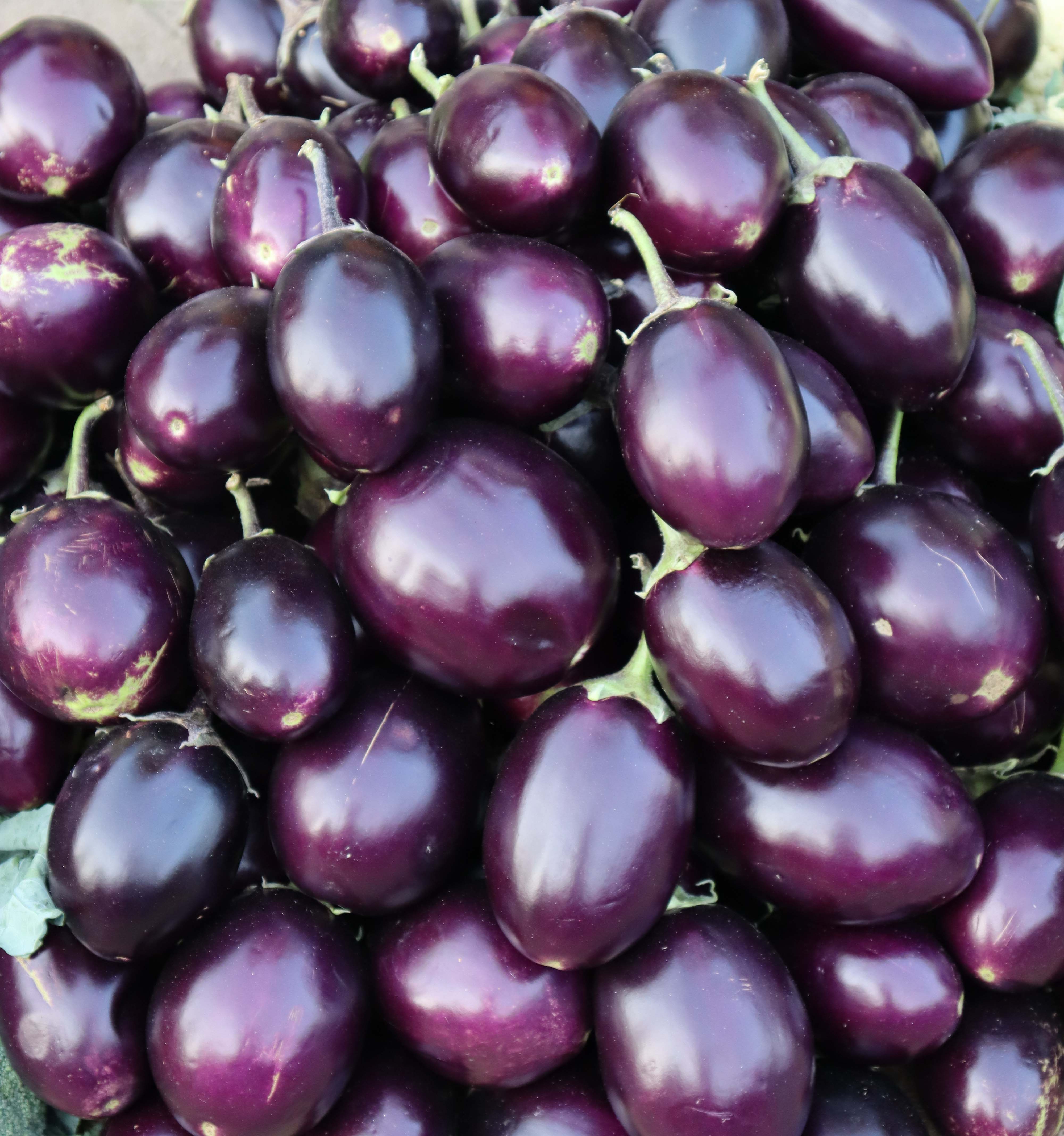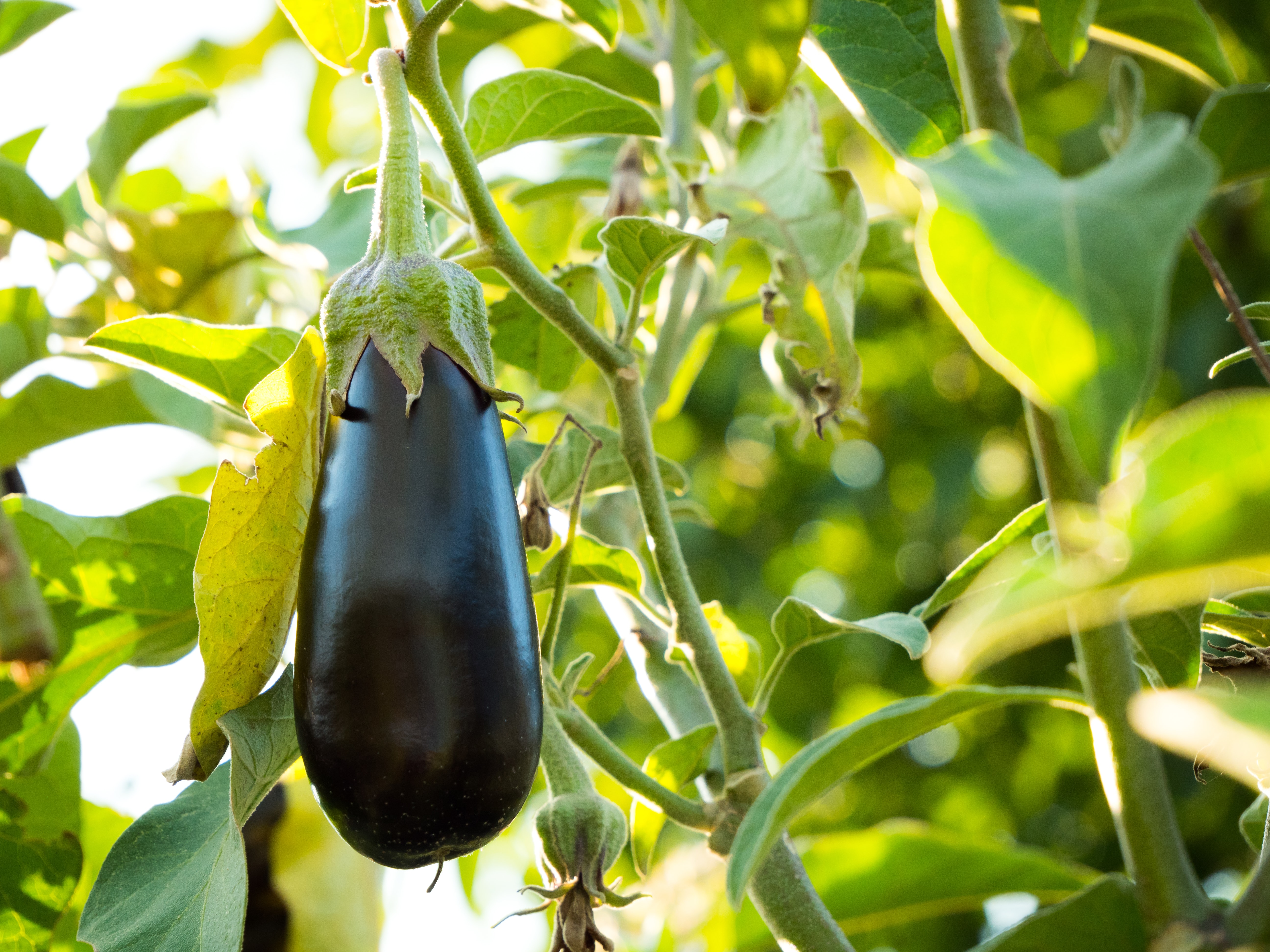

Solanum melongena L.
|
It is commonly known as Baingan and as one of the most common tropical vegetables grown in India. It belongs to the family Solanaceae and contains an array of biologically active compounds like phenols, including Caffeic acid, Quinic acid, Cinnamic acid, Chlorogenic acid, and flavonoids such as Nasunin and Quercetin. An extract of S. melongena (EPX) down regulated the expression of pro-inflammatory target genes (CXCL8, IL1B, ATF3, TRIB3, and RELA) activated by the NF- kB pathway. S. melongena also exhibited anti-inflammatory and anti- cancer activities. Mode of Consumption : Fried, cooked and roasted (bharta) |
| Plant Details | Agro-climatic Zone | Vernacular Names | Pictures |
| Scientific Name: Solanum melongena L. Family: Solanaceae Juss. Class: Magnoliopsida Order: Solanales Genus: Solanum L. Fruiting Season: March to August Parts: Fruit |
|
Assam : Bengena Bihar : Baingan Karnataka : Badan, Gulle, Kaachil Manipur : Khamen Mizoram : Bawkhban Nagaland : Pfhudi Tamil Nadu : Kattiri Uttar Pradesh : Baingan Uttarakhand : Baingan |
 Fruit  Fruit  Fruit bearing plant |
| Compound/Extract | Activity | Mode of Action | Marker/References |
| Dichloroacetate, 2-Deoxyglucose and a Hydroalcoholic Extract from the Skin of the Frui | Anticancer | Dichloroacetate, 2-Deoxyglucose and a Hydroalcoholic Extract from the Skin of the Fruit of Aubergine induced selective anticancer activity against melanoma cells. | [1] |
| Aqueous extract | Immunomodulatory | It inhibited immunologic and nonimmunologic stimulation mediated anaphylactic reactions and TNF-α secretion from mast cells. | TNF-α[2] |
| Hexane and dichloromethane fraction | Anti-inflammatory | The hexane and dichloromethane fractions decreased the production of nitric oxide, pro-inflammatory cytokines, and prostaglandin (PGE2). | NO and PGE2[5] |
| Ethanol and ethyl acetate extract | Anti-inflammatory | Ethanol and ethyl acetate extracts inhibited NO production and iNOS protein expression when tested using RAW 264.7 cells. | NO and iNOS [6] |
| Flour | Antioxidant | The hypoenergetic diet associated with Eggplant flour improved the antioxidant status in comparison to the placebo group. In metabolically healthy obese women, the eggplant flour reduced fat mass. | [7] |
| Ethanolic extract | Anti-inflammatory | Effectively inhibited the nuclear translocation of NF-κB and transcription of pro-inflammatory genes in A2E-laden ARPE-19 cells. | NF-κB[10] |
| Major Class | Metabolites (Content of bioactives: mg/100g Fresh Weight) |
| Carboxylic Acid | Chlorogenic acid: [3] |
| Flavanoid | Nasunin: , Quercetin: [3] |
| Flavonoid | Solanoflavone: [3] |
| Phenol | Caffeic acid: , Cinnamic acid: , Quinic acid: [3] |
| Terpene | β-Amyrin: [3] |
| Effect | Observation | DOI |
| Disease | Formulation | Reference | Author | TKDL |
| Cough / Bronchitis, Dyspnoea | Kasamardadikshaya | Sahastrayoga | Translated by D.V. Panditarao | Ayurveda |
| Iatrogenic, Vomiting / Emesis | Lokanatharasa Vikarasantyopayasa | Rasaratnasamuchayya | Translated by Indra deva Tripathi | Ayurveda |
| Syncope/Fainting, Delirium, Pyrexia | Dasamoola Kudineer | Therayar Kudineer | Therayar | Unani |
| Information from Wealth of India | Reference |
|
CSIR(1972).The Wealth of India, Raw materials,Vol.-IX ,P.383-390, New Delhi, India |
| 4.2, 04.2.1, 04.2.1.1, 04.2.1.3, 04.2.2.3, 04.2.2.5, 04.2.2.6, 04.2.2.8 |
|
| CSIR-North East Institute of Science and Technology, Jorhat-6, Assam, India
CSIR-Institute of Himalayan Bioresource Technology, Palampur-61,Himachal Pradesh, India |